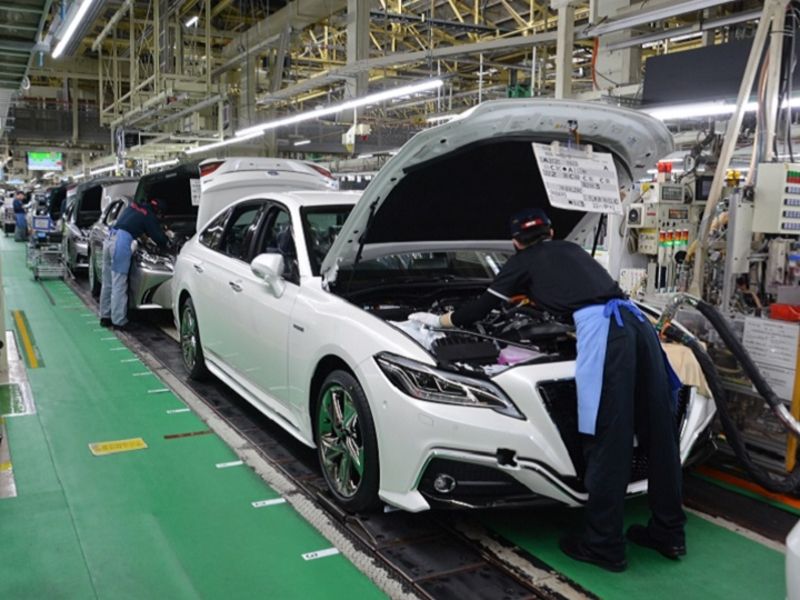
TOKYO — Toyota Motor Corp. willl slash global production again next month — by 330,000 units — as the pandemic and global shortage of automotive microchips continue to bite.
The total hit represents a 40 percent cutback from Toyota’s original October production plan.
In announcing the reversal on Friday, Toyota said it will also take a bigger hit than expected in September. Toyota expects to lose another 70,000 units this month.
That adjustment comes on top of an August announcement, when Toyota warned it would lose 360,000 vehicles of output globally in September, including some 80,000 units in North America.
Unlike in last month’s announcement, when Toyota kept its fiscal year global production target unchanged, Toyota said this time that it would lower its target to 9 million units for the fiscal year ending March 31, 2022. It had earlier planned to manufacture 9.3 million vehicles worldwide.
That total covers output only from Toyota and Lexus, not Daihatsu or Hino.
In October, Toyota said it would lose a total of 330,000 vehicles from its original plan of making 880,000 globally. Some 180,000 units will be lost at overseas factories, while Toyota’s domestic plants in Japan churn out 150,000 fewer for the month.
Toyota’s global procurement manager, Kazunari Kumakura, declined to give a regional breakdown for the overseas impact.
Kumakura blamed the slowdown on supply chain bottlenecks triggered by lingering lockdowns in southeast Asia, where factories are suspending operations amid continued outbreaks of COVID-19. He said the impact in Malaysia was the worst, but also cited Vietnam as a trouble spot.
A range of parts, including semiconductors and wire harnesses, are in short supply.
Kumakura said it was still too early to give an outlook for recovery.
“Operations are slowly recovering but it will still take time to produce finished parts,” Kumakura said. “We can’t say definitely when we will be able to see a rebound.”
In a statement, Toyota seemed to suggest business could normalize somewhat from November.
“Although the outlook for November and beyond is unclear, current demand remains very strong. As a result, the production plan for November and beyond assumes that the previous plan will be maintained,” it said, cautioning that things are still in flux. “We are continuing to assess expected production in October, and we will announce additional details in mid-September.”
Despite the dented production plan, CFO Kenta Kon said Toyota would keep its operating profit forecast unchanged for the current fiscal year. Toyota should be able to stabilize profits, despite making fewer cars, because of cost controls and a beneficial foreign exchange rate, he said.
Toyota had largely confounded the industry by ramping up output and notching record profits despite the pandemic-microchip double whammy.
In the company’s fiscal first quarter ended June 30, the automaker reported all-time high quarterly operating profit as well as record fiscal first-quarter results for net income, revenue and global retail sales. But it surprised last month by warning of big production reductions for September in virtually every major market.

